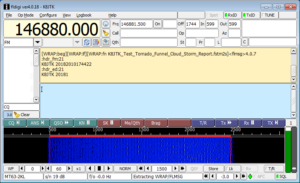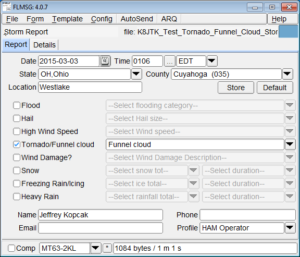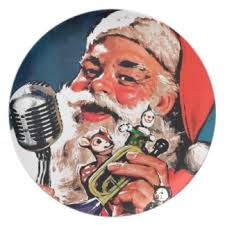One of the responsibilities of the Technical Coordinator in the Ohio Section is to submit something for the Section Journal. The Section Journal covers Amateur Radio related things happening in and around the ARRL Ohio Section. It is published by the Section Manager Scott – N8SY and articles are submitted by cabinet members.
Once my article is published in the Journal, I will also make it available on my site with a link to the published edition.
You can receive the Journal and other Ohio Section news by joining the mailing list Scott has setup. You do not need to be a member of the ARRL, Ohio Section, or even a ham to join the mailing list. Please sign up!
If you are an ARRL member and reside in the Ohio Section, update your mailing preferences to receive Ohio Section news in your inbox. Those residing outside the section will need to use the mailing list link above.
Updating your ARRL profile will deliver news from the section where you reside (if the leadership chooses to use this method).
Go to www.arrl.org and logon.
Click Edit your Profile.
You will be taken to the Edit Your Profile page. On the first tab Edit Info, verify your Email address is correct.
Click the Edit Email Subscriptions tab.
Check the News and information from your Division Director and Section Manager box.
Click Save.
Now without further ado…
Read the full edition at: http://arrl-ohio.org/news/2018/OSJ-Nov-18.pdf
THE TECHNICAL COORDINATOR
Jeff Kopcak – TC
k8jtk@arrl.net
A couple years ago, Medina county asked me to create a training session for them on how to use Fldigi specifically for NBEMS. Recently, Lorain county ARES encouraged participants to utilize NBEMS methods. NBEMS stands for Narrow Band Emergency Messaging System. It is a set of standards for the ham radio community to communicate with each other using text and E-mail type traffic. Standards are good to have so there is not a situation where different groups use different digital standards and cannot communicate between themselves.
Two hams are responsible for the NBEMS standards: Dave – W1HKJ, author and maintainer of the Fldigi suite of applications, and Skip – KH6TY, author of one of the first PSK applications, Digipan. Their idea was to have a prolific digital communication standard that followed these important principals:
- Utilize radios, software, and hardware that are used in every day ham radio (familiarity)
- Inexpensive. All can participate. Older computers can be used.
- Simple. No steep learning curve in an emergency situation but flexible.
- Independent of infrastructure
To make digital interaction possible: a radio, computer, interface between the two, and software to tie it all together is needed. An interface is typically a device like the SignaLink or RigBlaster. One nice thing about NBEMS, it’s possible to operate MT63-2KL by holing your radio up to the computer. This means a separate interface is not required. It’s great in a pinch but doesn’t provide an ideal operating situation.
 Fldigi is a modem application. It modulates and demodulates – what sounds like noise – into data. Flmsg, used in conjunction, is a forms manager. It allows you to create and reply to standardized forms and verify reception through a checksum. A checksum is an algorithm used to detect errors in storage or transmission. Standard forms included are ICS, IARU, Radiogram, or the ability to send CSV data. CSV is a plain-text file that stores tabular data with each line being a single record contains one or more fields separated by commas. In NBEMS, CSV is a low-bandwidth way to transfer Excel documents without formatting and extra Meta data. As an example: a Excel document can be 17 kB in size but the same data exported to plain-text CSV is only 5 kB.
Fldigi is a modem application. It modulates and demodulates – what sounds like noise – into data. Flmsg, used in conjunction, is a forms manager. It allows you to create and reply to standardized forms and verify reception through a checksum. A checksum is an algorithm used to detect errors in storage or transmission. Standard forms included are ICS, IARU, Radiogram, or the ability to send CSV data. CSV is a plain-text file that stores tabular data with each line being a single record contains one or more fields separated by commas. In NBEMS, CSV is a low-bandwidth way to transfer Excel documents without formatting and extra Meta data. As an example: a Excel document can be 17 kB in size but the same data exported to plain-text CSV is only 5 kB.
Tim – NC8OS, EC for Lorain, asked if I would give an Fldigi training session, which I was more than happy to do. A few years passed since I gave similar training in Medina. A number of changes have happened and it was time to update my presentation. Changes include much more frequent (and not always stable) Fldigi and Flmsg updates, changes in work flows – especially within Flmsg, and I have gained more experience interacting and interfacing with digital nets across the country.
Fldigi had some cosmetic changes, mostly around the menus and configurations. Workflow changes in Flmsg seem like they could be beneficial but were poorly implemented. Luckily, we can go back to familiar behavior. Most important lesson I’ve picked up: all these whiz-bang things are tools. This or any other technology needs to be played with to figure out how it can be best utilized (offering a real advantage), how it can be utilized efficiently, and have people who know how to use these tools. Groups are finding digital operators are ones who have the least amount of problems and greater success during drills than someone who hasn’t opened the application in 6 months. This, too, means someone who wants to become successful needs to practice, practice, and practice by operating, participating in practice nets or starting one if one is not available.
For my presentations and training, I feel people get much more out of  a hands-on session. I encouraged participants to bring their stations or go-boxes which helped facilitate a great question and answer session to address a good number of problems. Eric – N8AUC, DEC for District 10, was on hand to answer questions as well. We accomplished a lot, answered a lot of questions, and got them on the right track.
a hands-on session. I encouraged participants to bring their stations or go-boxes which helped facilitate a great question and answer session to address a good number of problems. Eric – N8AUC, DEC for District 10, was on hand to answer questions as well. We accomplished a lot, answered a lot of questions, and got them on the right track.
I learned that I need to be figuring out interactions with this combination of hardware, software, and Windows 10. As more people are upgrading, replacing computers, or purchasing new devices this means more questions and issues will center on the most widely used operating system platform. Though I have stopped using Win 10 in favor of Linux, I do need to spend time with it to better answer those types of questions.
Thank you to Lorain ARES for allowing me the opportunity to pass on knowledge about digital and NBEMS. My presentation is available online on my website. Contact me about setting up a training session with myself or a Technical Specialist if you would like to host a session on NBEMS.
Speaking of Technical Specialists, another meeting night idea for your club is to hold a “Test and Tune Night.” Dave – KD8TWG hosted one of these events for LEARA. It usually ends up being a “Test and Test Night” because the operating manual does not have the information on how to make adjustments. Those are found in a Service Manual. Professional test equipment was on hand including Service Monitors, wattmeters, and analyzers to test radios, scanners, and coax. Dave could tell you if that $30 Baofeng is compliant with spectral requirements. VERY good chance it won’t be.
Dave reminded all of us that Part 97 certifies us as operators to be compliant with the rules. This allows us to build our own radios and not have to do something crazy like file a testing and compliance report with the FCC for a home brew project. Just because the radio ‘sounds good,’ ‘does everything I need,’ or ‘was cheap’ doesn’t mean it works correctly especially when transmitting. It is up to each of us as hams to make sure our equipment is compliant. Contact Dave or myself to help get a Test and Tune night for your club.
 It’s that time of year again! For the 13th consecutive year, The 3916 Nets will be presenting The Santa Net on 3.916 MHz. Good girls and boys can talk to Santa Claus, via amateur radio, nightly at 8:30 PM (Eastern) starting Friday, November 23, 2018. The Santa Net will run nightly at 8:30 PM Eastern through Christmas Eve, December 24, 2018. This fun opportunity is great for connecting kids or grandchildren with the Head Elf himself. Details and updates will be made via their Facebook group: https://www.facebook.com/3916santanet/.
It’s that time of year again! For the 13th consecutive year, The 3916 Nets will be presenting The Santa Net on 3.916 MHz. Good girls and boys can talk to Santa Claus, via amateur radio, nightly at 8:30 PM (Eastern) starting Friday, November 23, 2018. The Santa Net will run nightly at 8:30 PM Eastern through Christmas Eve, December 24, 2018. This fun opportunity is great for connecting kids or grandchildren with the Head Elf himself. Details and updates will be made via their Facebook group: https://www.facebook.com/3916santanet/.
Thanks for reading and 73… de Jeff – K8JTK
